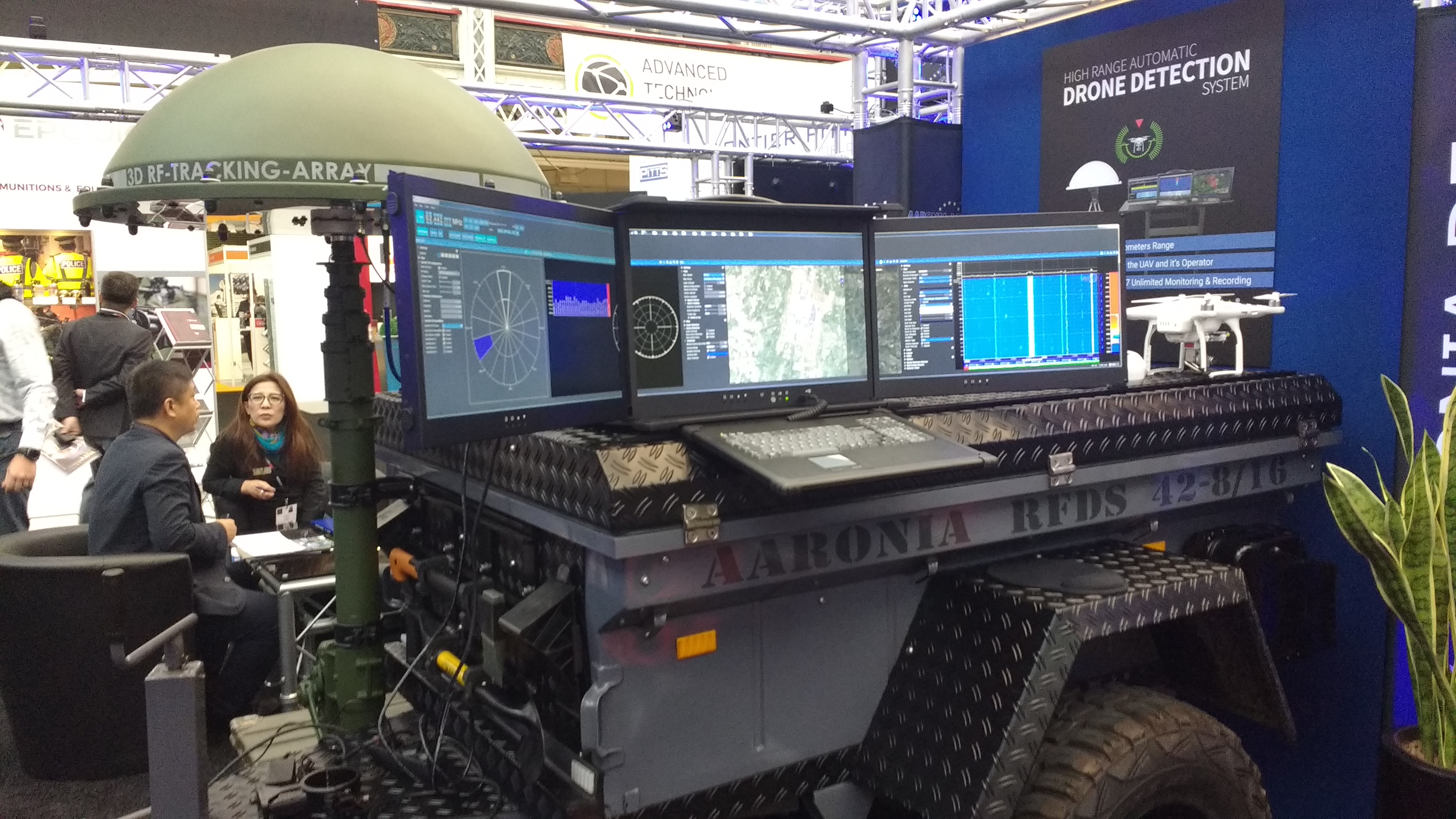WSi News2017-05-08 13:30:34
Real-Time Drone and UAV Detection System from Aaronia
Following a four-year development program, Aaronia launched the Drone Detector, a product that exploits the radio-frequency (RF) radiation emitted by the UAV’s onboard systems and by the operator’s control unit.
Two types of 3D direction-finding antenna are offered by the Drone Detector—the IsoLOG 3D 80-UWB and IsoLOG 3D 160-UWB. Both cover from 9 kHz to 6 GHz, and extenders are available should VLF (below 9 kHz) and 6-20 GHz coverage be required. The Drone Detector has a real-time bandwidth of 80 MHz. Optionally this can be extended to 175 MHz.
Once a signal has been detected, its approximate bearing will be shown to an accuracy that depends on which model of antenna is being used. With the standard IsoLOG 3D 80-UWB, the bearing accuracy will be at least within the 45-degree coverage of a single antenna sector but is often much higher.
When larger areas must be covered, several antennas and spectrum analyzers can be connected to a single centralized PC, which manages these simultaneously. The larger the area to be covered the greater the number of antennas and analyzers that must be deployed. Any threat signal is likely to be received by several antennas, so the results can be triangulated to provide detailed information on the location of the UAV and/or its operator. Since the system is designed to recognize the RF signals specifically associated with UAVs by observing their frequency and other characteristics, it will not provide false alarms when faced with other types of RF signal. When faced with several UAVs, the system can detect these, even if the intruders are of the same type or of a different type.
The average time needed for detection of a UAV is between 10 microseconds and 500 milliseconds. It depends on factors such as the complexity of the deployed system and the number of antenna arrays being used. While a clear line of sight between the antennas and the UAV or its operator gives the best results, the system can detect RF signals whose source is obscured by trees, bushes or a crowd of people.
The system is passive, emitting no signals of its own that could interfere with the normal operation of nearby assets such as airports, or give the UAV operator warning of its presence. System performance is unaffected by darkness or poor weather—if meteorological conditions allow UAVs to fly, they can be detected.
